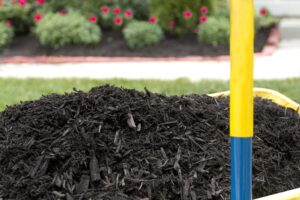
As winter recedes and the first signs of spring start to appear, gardeners everywhere feel a renewed sense of excitement and anticipation. Preparing your garden for the new season is not just a ritual; it’s a promise of growth, renewal, and the beauty that lies ahead. To ensure your garden thrives, follow these five essential gardening rules tailored to the unique demands of the early spring season.
1. Start with a Clean Slate: Clearing and Prepping Your Beds

Before you plant a single seed, it’s crucial to clear your garden beds of last season’s remnants. Remove dead foliage, weeds, and any debris that accumulated over the winter months. This not only tidies up your garden but also prevents the spread of diseases and pests that could have overwintered in the plant matter.
Once cleared, enrich your soil by incorporating compost or well-rotted manure. This will replenish nutrients lost over the previous growing season, ensuring your plants have the food they need to flourish. Additionally, consider testing your soil’s pH to make sure it’s optimal for the types of plants you intend to grow. Tailoring your soil to your garden’s needs is a foundational step that sets the stage for a successful growing season.
2. Timing is Everything: Know When to Plant

One of the most common gardening missteps is planting too early. While the first warm days may tempt you to start sowing, patience is vital. Keep an eye on local frost dates and wait until the danger of frost has passed before planting sensitive seedlings. Utilize weather apps or consult local gardening groups for the most accurate information tailored to your area.
For those eager to get started, focus on cool-season crops like peas, lettuce, and kale, which can tolerate lower temperatures. Starting these plants early can extend your growing season and lead to an earlier harvest. Remember, understanding the needs of each plant in terms of temperature and timing can be the difference between a thriving garden and a disappointing one.
3. Prune to Promote Health and Growth

Early spring is the ideal time for pruning many types of plants. Pruning not only helps to shape your plants but also encourages healthy growth and flowering. Focus on removing dead or diseased branches, as well as any that cross or rub against each other, which can lead to damage and disease.
However, be mindful of the flowering habits of your plants. For spring bloomers, it’s best to wait until after they’ve flowered to prune, as they set their buds the previous year. Understanding the specific needs of each plant in your garden will ensure you’re pruning in a way that promotes optimal health and beauty.
4. Don’t Forget Mulch: Protect and Nourish Your Soil

Applying a fresh layer of mulch in your garden beds not only improves the appearance of your garden but also provides numerous benefits to your plants. Mulch helps retain soil moisture, suppresses weeds, and keeps soil temperatures consistent, creating a more hospitable environment for plant roots.
When mulching, be sure to leave a small gap around the base of plants to prevent moisture buildup, which can lead to rot. Opt for organic mulches like shredded bark or straw, which will break down over time and add nutrients to your soil. Remember, a well-mulched garden is a healthier and more resilient garden.
5. Water Correctly: Establishing Strong Roots

Proper watering is crucial, especially as new plants are getting established. Overwatering can be just as harmful as under-watering, leading to root rot and other issues. Ensure your garden has adequate drainage and water plants at the root level to encourage deep root growth.
If you have the means, consider installing a drip irrigation system or soaker hoses for more efficient watering. These systems deliver water to the base of the plant directly, minimizing waste and reducing the risk of foliar diseases. Additionally, watering in the early morning allows plants to fully absorb moisture before the heat of the day, reducing evaporation and ensuring your plants stay hydrated.
Gardening Rules Ensure You’re Ready for Spring!

Preparing your garden for spring is an act of optimism and foresight. By following these essential gardening rules, you set the stage for a season of growth, beauty, and bounty. Clear and prep your beds, time your plantings wisely, prune for health and growth, mulch to protect and nourish, and water with care. With these practices in place, your garden will not only be ready for spring but will thrive throughout the growing season. Happy gardening!
Catherine is a tech-savvy writer who has focused on the personal finance space for more than eight years. She has a Bachelor’s in Information Technology and enjoys showcasing how tech can simplify everyday personal finance tasks like budgeting, spending tracking, and planning for the future. Additionally, she’s explored the ins and outs of the world of side hustles and loves to share what she’s learned along the way. When she’s not working, you can find her relaxing at home in the Pacific Northwest with her two cats or enjoying a cup of coffee at her neighborhood cafe.
Leave a Reply